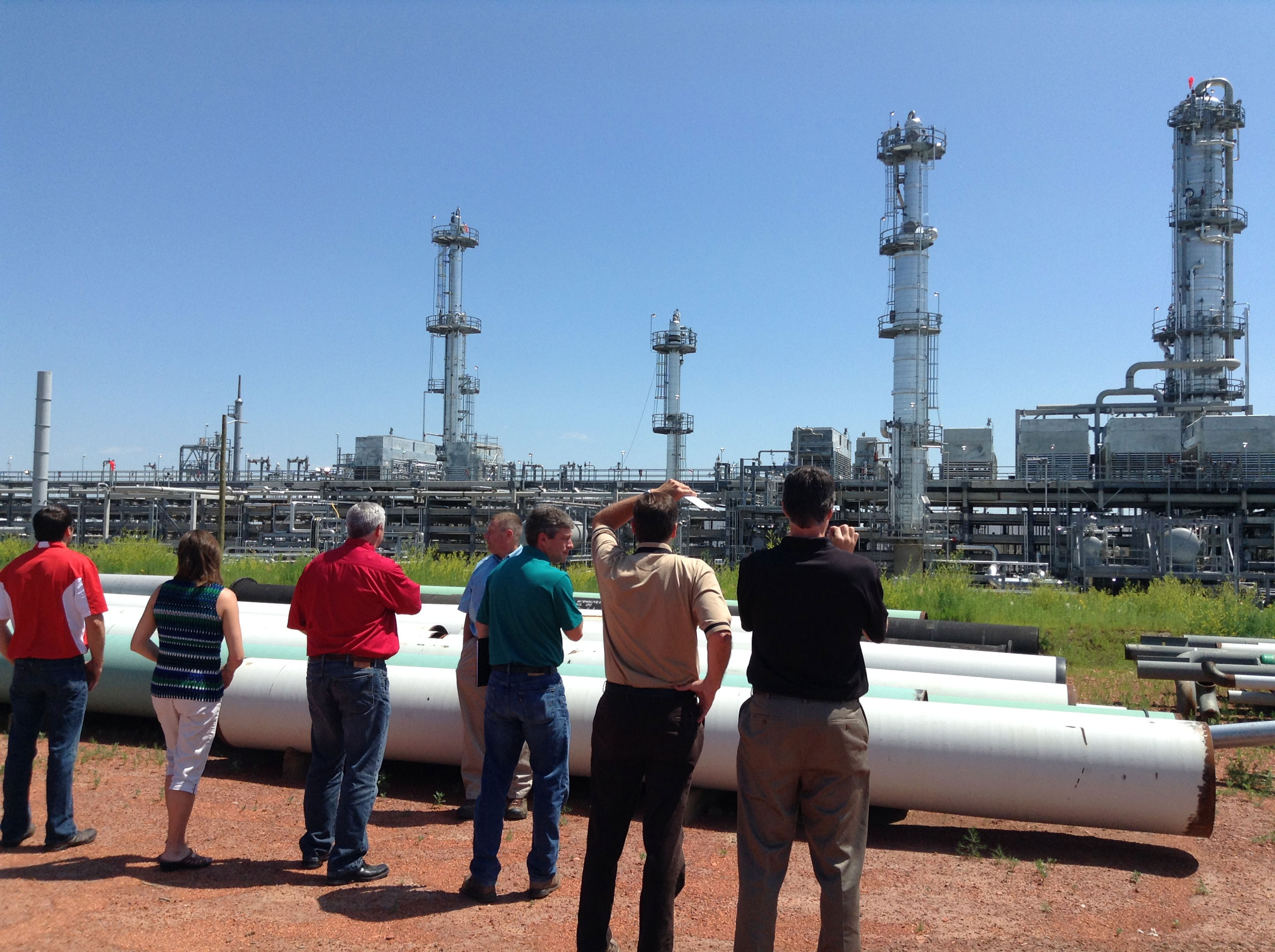
As I drove into Dickinson, taking a moment to soak in the event I was about to experience, I noticed diesel was selling for less than gasoline. At the time, I was more interested in understanding why the Dakota Prairie Refinery was the first greenfield refinery in the United States in nearly 40 years.
Upon arrival I quickly found out I wasn’t the only one who noticed the price of diesel was selling for less than gasoline. Then a presentation of the new refinery came. This presentation was more of a celebration of the hard work, investment and completion of the Calumet Specialty Products and MDU Resources partnership.
After, I spoke with Kevin Stanley, CEO, Ventech Engineers International, one of the major players involved with $425 million dollar project.
“This is a tremendous new development in North Dakota,” Stanley said. “This is the ultimate result of all the advancements in horizontal drilling.”
Stanley continued explaining why the recent developments and advancements are having a major impact on the global energy scene.
“Suddenly oil across the United States that was inaccessible is being produced,” Stanley said. “As that oil is being produced it is being produced in regions that aren’t connected to the national pipeline grid or rail network or refining system. So suddenly something’s occurred no one predicted.”
This surge in energy production created windows of opportunities to integrate old styles and strategies with a new innovative approach influenced by volume and scale.
“And what those are is there are several areas in the United States that now have oil and they can refine that oil into reusable products locally instead of having it be brought in several hundred miles away,” Stanley said. “It’s more cost efficient and ecologically efficient to regionally refine the fuels and then redistribute it to the local populace instead of expending all the fuels necessary to move those refined fuels around the US. It’s a very positive development.”
When asked about the symbolism and significance of the first refinery being constructed from top-to-bottom since 1976, Stanley saw an obvious trend which he believes may turn around.
“I’m 51, and what I have witnessed in over the years is the Unites States import more and more of its oil to meet our domestic needs. The most efficient way to do that is increase the capacity of the refineries along the coast. Bring the foreign oil in by tanker, then refine it into fuels then distribute via a pipeline network,” Stanley said. “You are on the forefront of the newest refining wave to hit the United States.”
Stanley’s comments on the newest trend in energy didn’t do unnoticed, and neither did their firms experience to back up his professional opinion.
“We’ve been building refineries for 48 years. We’ve done many projects throughout the years and throughout the world, essentially everywhere but Australia.” Stanley said. “We have about 1.2 million square feet of covered space down in the Houston area. So the refineries are actually built underroof, in preassembled modules, then those modules are heavily tested, certified, then placed on trucks and hauled over the plant site to shorten the total construction schedule at site.”
Shifting back to the world of refineries and trends in refineries, Stanley sees the current energy play as something that will benefit the United States’ global position.
“Now with the resurgence of domestic production, many are projecting we will be energy independent, at least from the crude oil perspective,” Stanley said.
He continued saying it will not be easy, but many investments have been made in many areas of energy development and distribution.
“That oil is not always located in the most convenient places,” Stanley said. “So new investments such as gas processing facilities, additional thousands of miles pipelines infrastructure, all that has to come to the forefront now to use these new resources.”
When asked about a possible renaissance of micro-refineries or small scale facilities that some communities have had inquires on, Stanley questioned their current marketability.
“I don’t see a renaissance of microfining in the US because we have extremely sophisticated fuel standards,” Stanley said. “So its almost cost prohibitive to built extremely small refineries because of the number of process units required to refine crude oil into ultra low sulfur diesel. And with no economies of scale what-so-ever the microrefineries just don’t make sense.”
Stanley cited several examples of how adding major supporting equipment can flip a project upside down fast.
“We do built 1000-barrel plants too, but after you add a distro hydrotreater and a sulfur plant and aiming unit, along with all of the various support facilities, even though it only a 1000 barrels a day they will have the same control system as a 50,000 barrel plant,” Stanley said. “The economies of scale just don’t work for those smaller ranges unfortunately.”
However, flipping the question over, Stanley responded to the idea of a full scale cracking plant in the United States, even perhaps North Dakota.
“The big full conversion plants are always driven by economies of scale,” Stanley said. “The big conversion refineries that have the ability to take the fuel oil produced from a smaller plant and then crack that fuel oil back into either gasoline or diesel, those are really driven by volume.
When asked about the future of North Dakota and the refining volume, Stanley didn’t quite bring out the crystal ball, but thought the path looked pretty clear.
“So you may be setting up a situation in North Dakota, if there continues to be refineries developed here, there may be an opportunity to put in full conversion plants in the future so that North Dakota fuel oil is cracked back into North Dakota diesel or gasoline,” Stanley said. “You are setting the stage for more opportunity for downstream refining.”


Leave a Reply